Introduction
- The term empowerment is commonly used in management paradigms.
- Empowerment is the ability of employees or no-managerial staff members to make decisions on their own without consulting their employers or managers (Hauge, 2011, p.1).
- It can be achieved through employee participation and involvement.
Employee empowerment is commonly used in management paradigms in the recent past. This is because of the consequential benefits that the organization gain after empowering their employees (Lashley, 1997). The empowerment of employees gives them the ability to make decisions on their won without involving their employees or managers. Employee empowerment is achieved through various ways among them participation and involvement of employees in matters related to the organization.
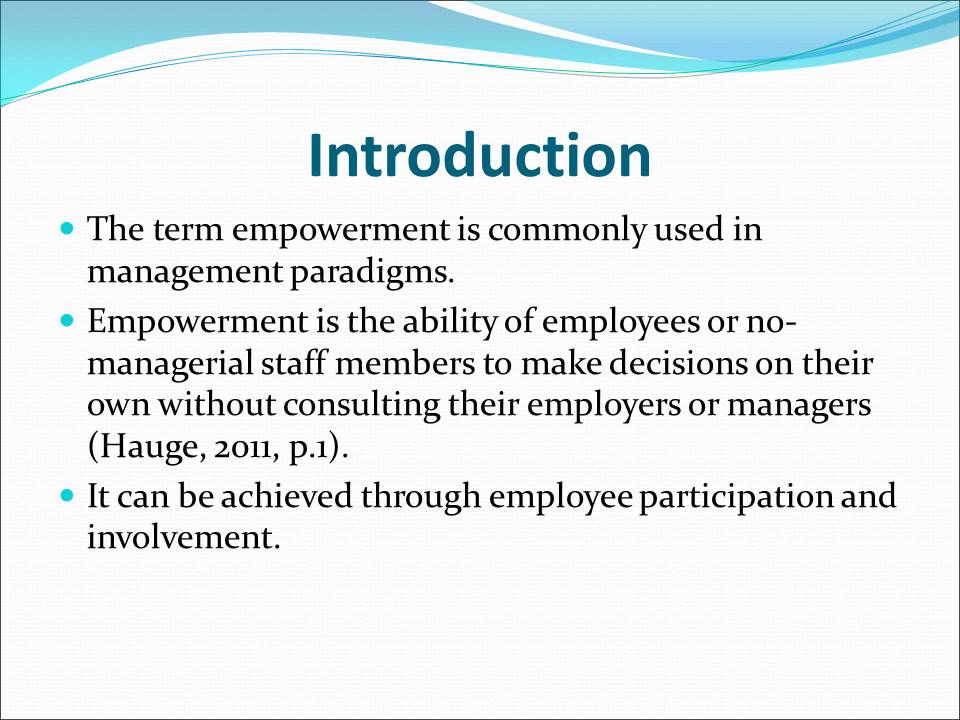
The Main Objective of Employee Empowerment Techniques
- Empowerment techniques are meant to put emphasis on the existing and new fruitful communication channels in the organization (Wilkinson, 1998, p.42).
- They create a sense of ownership in the employee regarding the organization.
- Empowered employees take pride in the organization’s activities (Paige, 2013, p.1).
The main objective of empowerment techniques is to emphasize on the existing fruitful communication channels and as well as introduce new ones in the organization (Wilkinson, 1998, p.42). By empowering employees, the organization creates a sense of ownership in the employees who work hard to carry out the organization’s mission and vision (Paige, 2013, p.1).
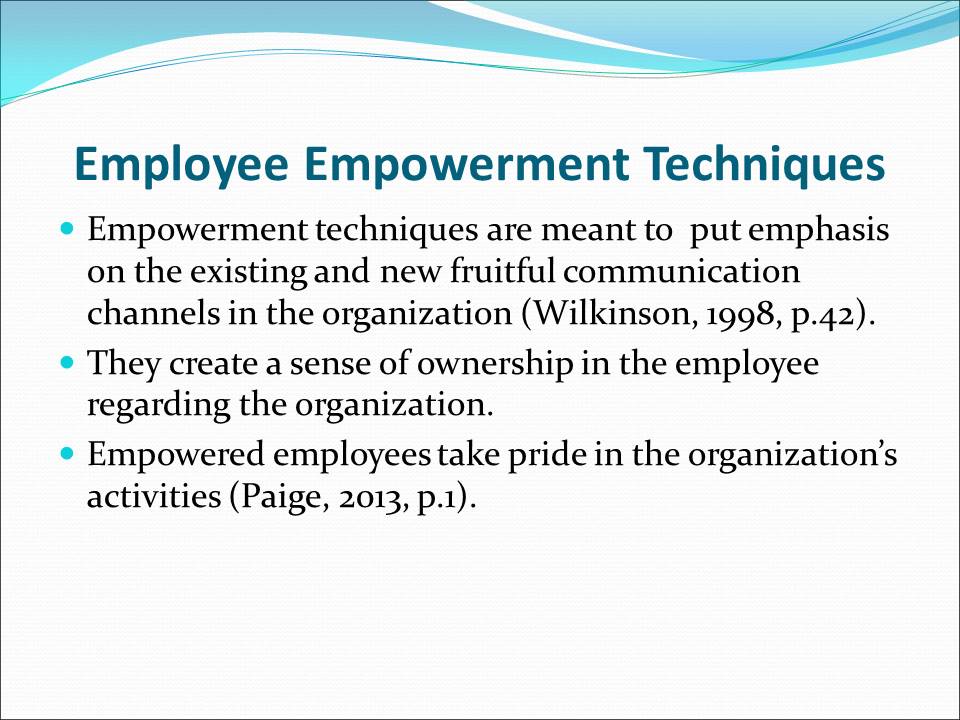
Employee Empowerment Techniques
- Employee participation: This entails giving the employees the chance of influencing and taking part in making organizational decisions.
- Employee involvement: These are processes that incorporate the support and contribution of employees towards the attainment of organizational goals (Lashley, 2000, p. 791).
Allowing employees to be involved and participate in matters concerning the organization in one way empowers the employees (Potterfield, 1999). Through participation, employees are able to influence where necessary and take part in the decision making process of the organization.
Employee involvement entails incorporating the contribution and support of the employee towards the achievement of organizational objectives (Lashley, 2000, p.791).
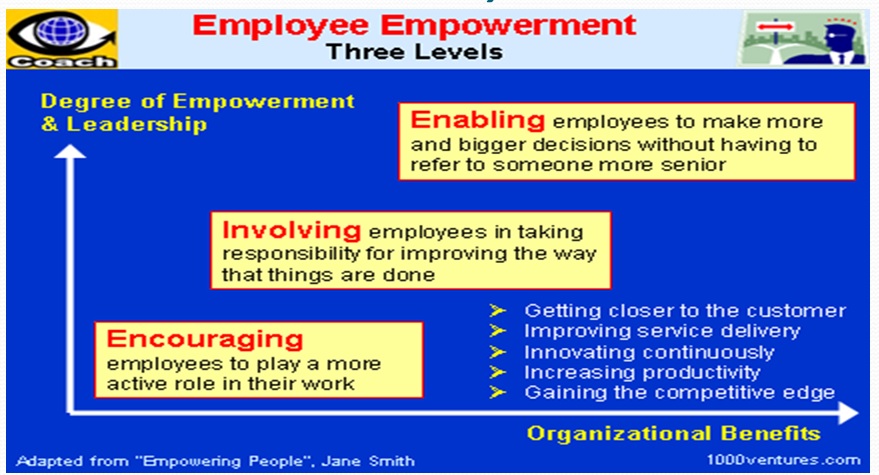
This is a simplified flow chart indicating the employee empowerment techniques and the organizational benefits they come with (Blyton & Turnbull, 2004).
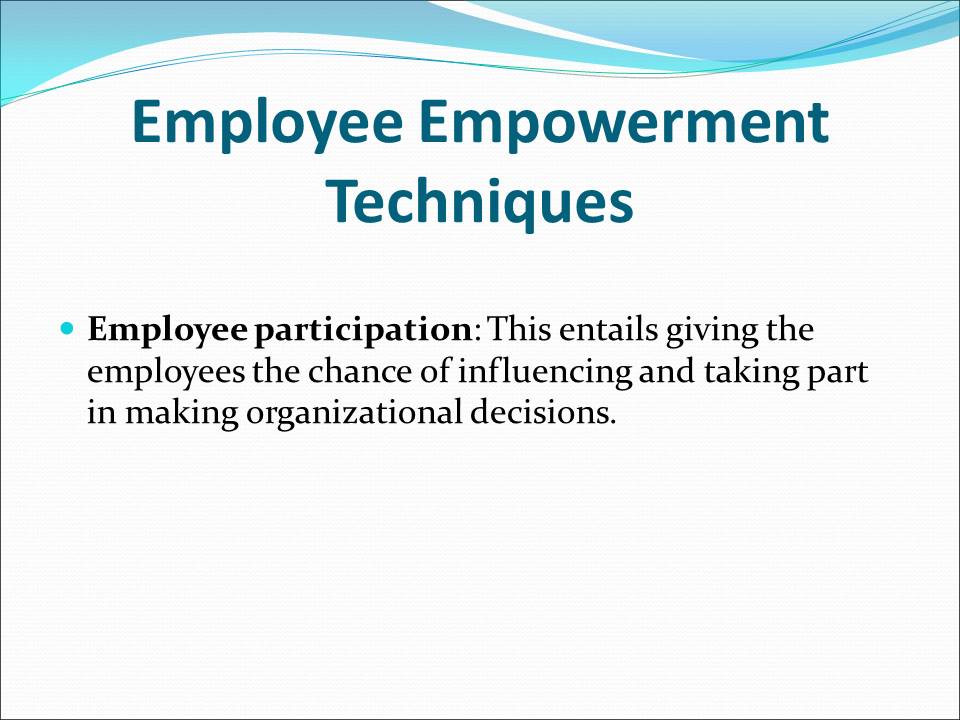
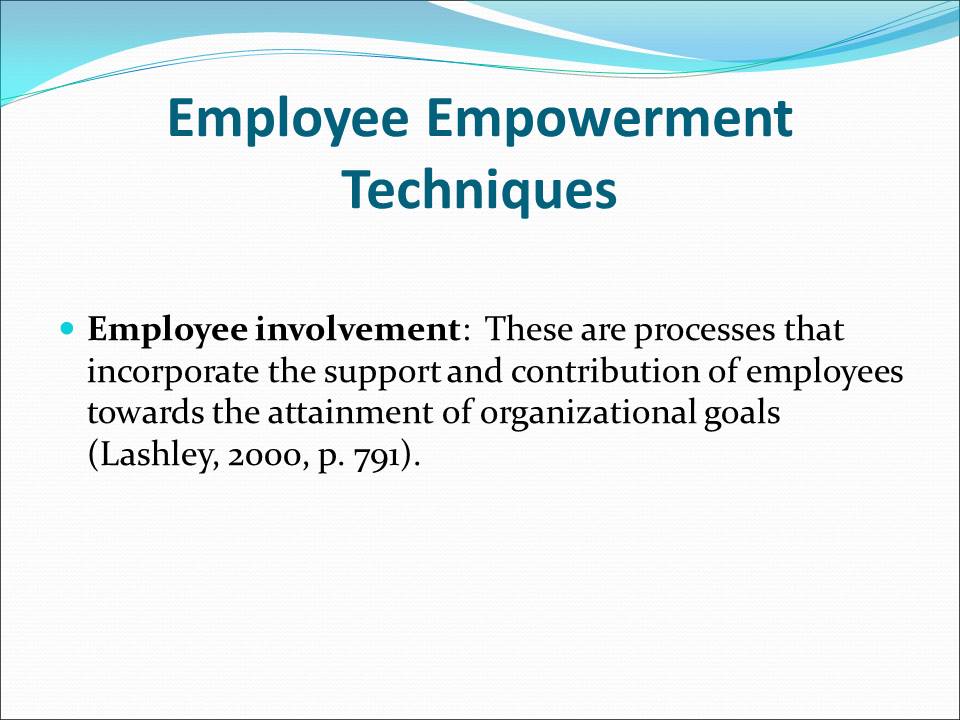
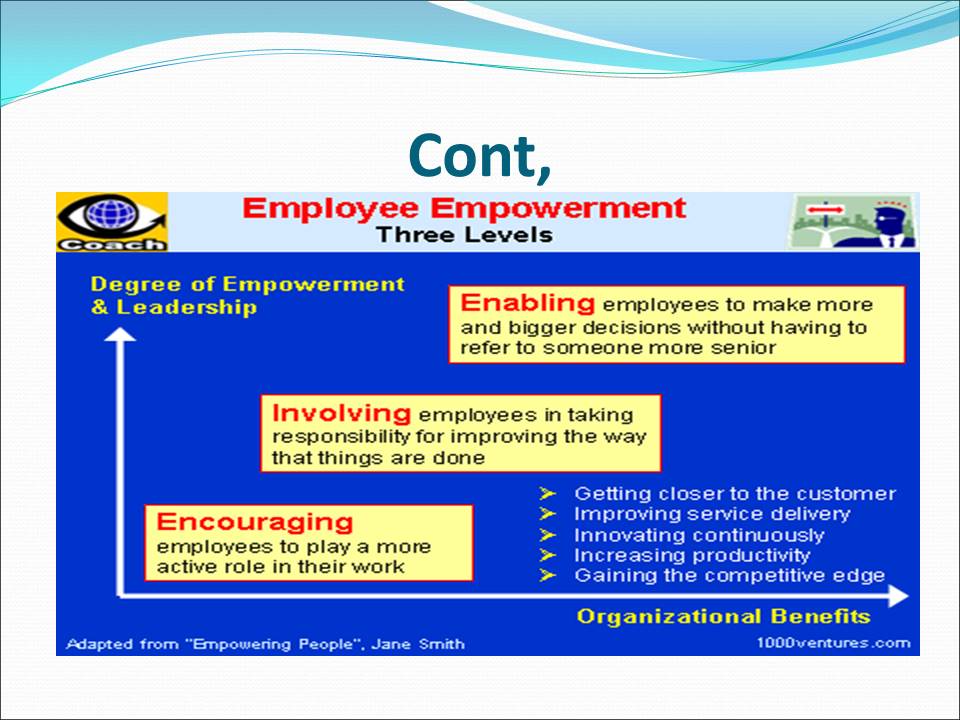
The Empowerment process
It could involve the following:
- Changing the management roles in the organization from supervisory to coaching.
- Recognizing and rewarding employees that are proactive (Armstrong, 2010).
- Delegation of duties to employees especially in teams.
- Expression of expectations and confidence in the employees.
There are several steps and measures that can be taken in organizations in order to achieve employee empowerment through involvement and participation. For instance, the organization’s management roles could be changed from supervisory to coaching. This involves coaching and training the employees on how to identify and solve problems on their own. After coaching, the proactive employees could then be recognized and rewarded as a way of motivating them (Armstrong, 2010). Last but not least, employee empowerment can be achieved by delegating duties to employees and making them work in teams. This is done by giving each team member the power to make decisions. It is also important for the employees to know that you have confidence in them. This makes them work diligently without fear.
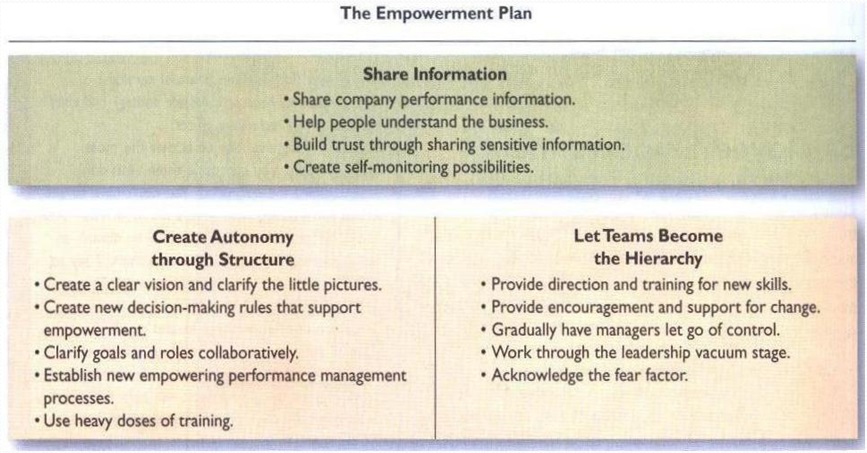
This plan clearly indicates that empowerment plan that organizations can adopt in order to ease and quicken the empowerment process (Daniels, 2006).
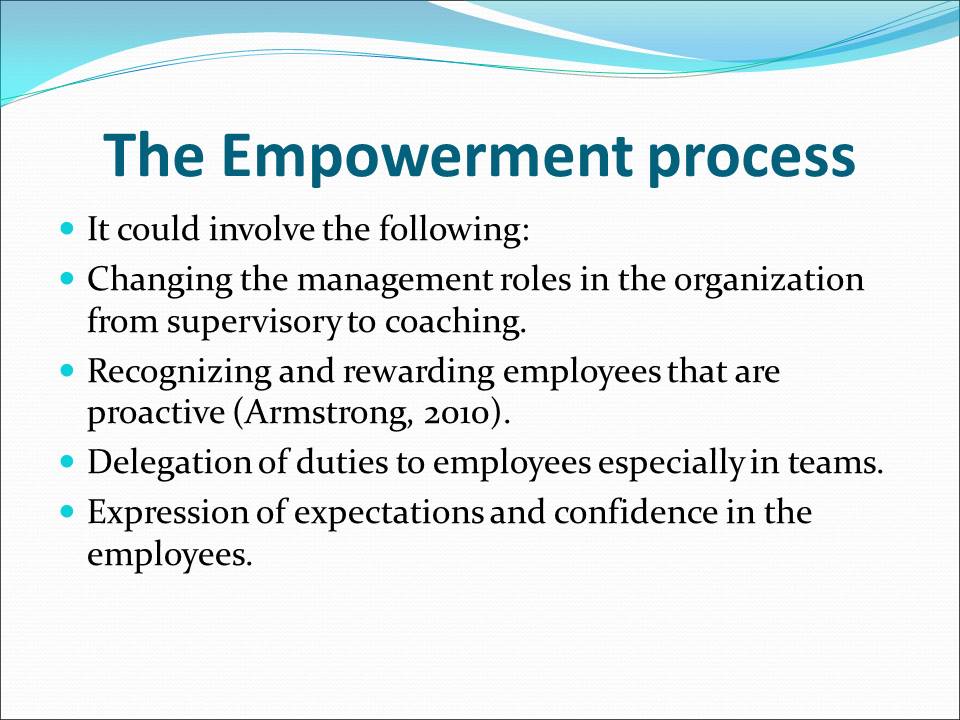
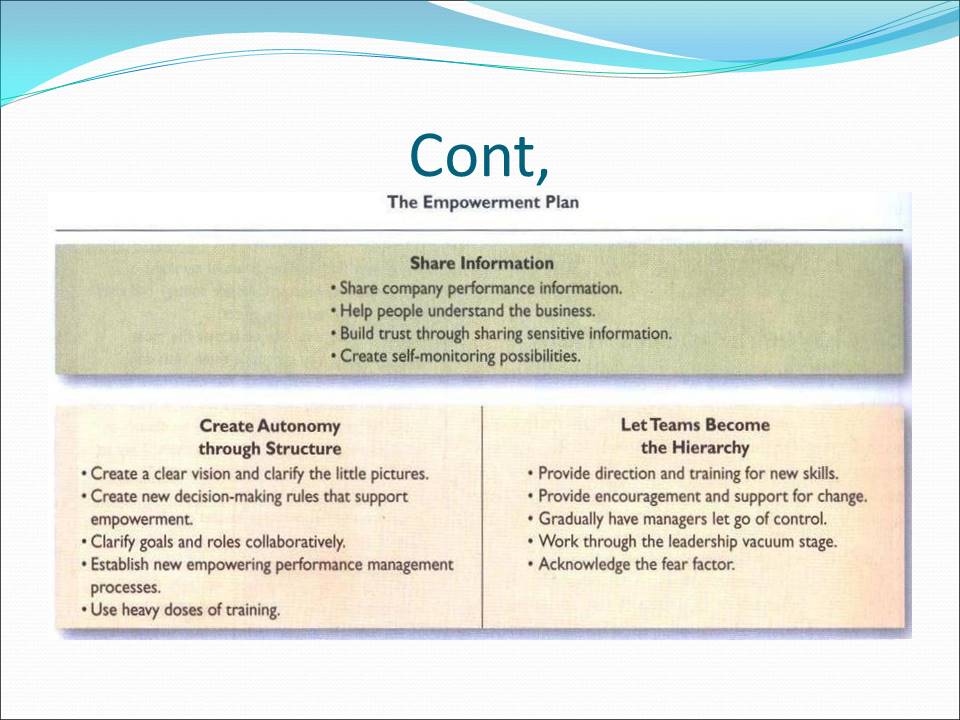
Confidence in employees
In this picture, the manager has confidence in his employees hence letting them work together and make decisions without having to consult him. Both the employees and manager seem happy about this hence the smiles.

Engagement of employees
This photo shows an interactive session between the manager and the employees in a bid to empower them and be left on their own.
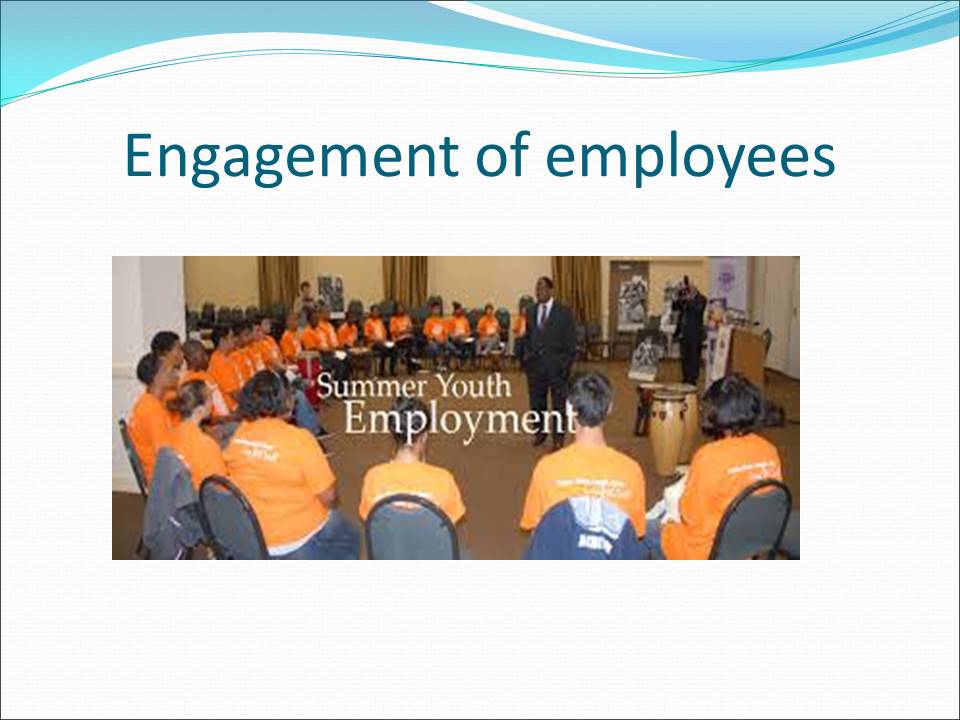
Benefits of employee empowerment
- The empowerment of employees comes with several benefits to the organization (Beardwell & Claydon, 2007).
- Some of the benefits include increased efficiency, high quality managerial decisions, employee development , team work, reduced turnover rates, and increased morale.
- These help the organization deal with problems of complexity, ambiguity and uncertainty.
Empowerment of employees does not only benefit the employees but the organization benefits a great deal (Beardwell & Claydon, 2007). Among the several benefits include increased work efficiency, quality decisions are made, increased morale by the employees thus giving quality output. When this happen, the organization is able to solve the problems of complexity, ambiguity and uncertainty which prove difficult. For instance, when the turnover rate is reduced the organization is able to confidently plan for the future unlike when the turnover rate is high (Dundon & Rollinson, 2011).
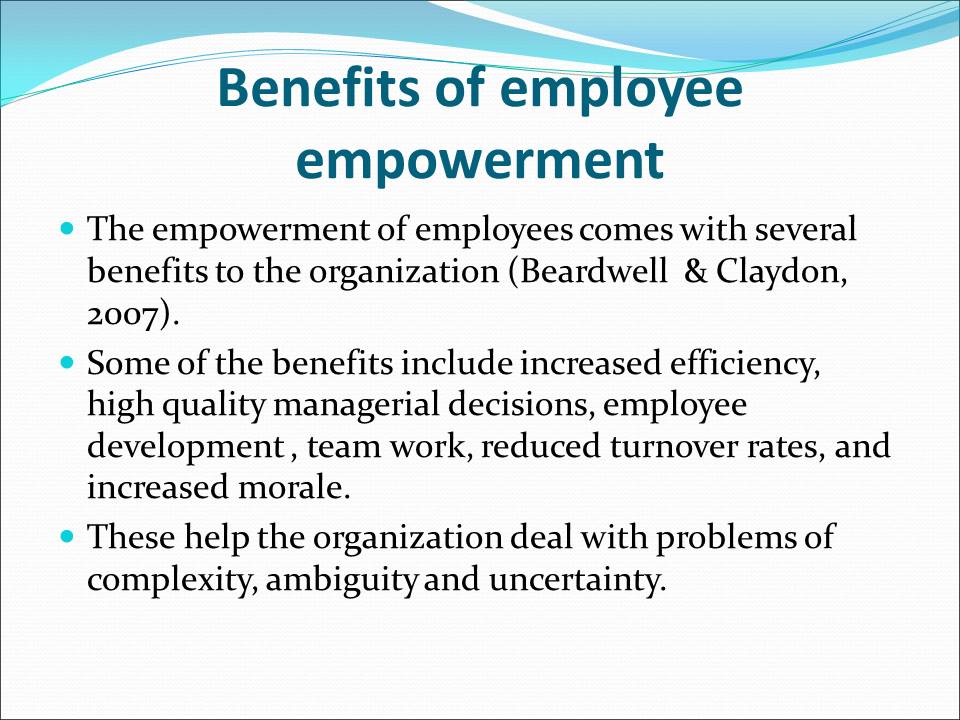
Coping with complexity in organizations
- Complexity is the puzzle of organizations being unable to predict the future hence reduce risk (Bamber et al., 2004, p 64).
- Empowering employees through involvement and participation helps build the capacity in them to learn and adapt to new situations.
- This helps maximize the chances of clutching on opportunities and act on threats.
The current business environment is complex in the sense that it is difficult for organizations to predict the future and be bale to reduce risk (Bamber et al., 2004, p. 64). This problem can be partly solved through employee empowerment. This is because, empowering employees creates interest in the organization thus being able to build their capacity to quickly learn and adapt to new situations in the business environment (Torrington et al., 2008).
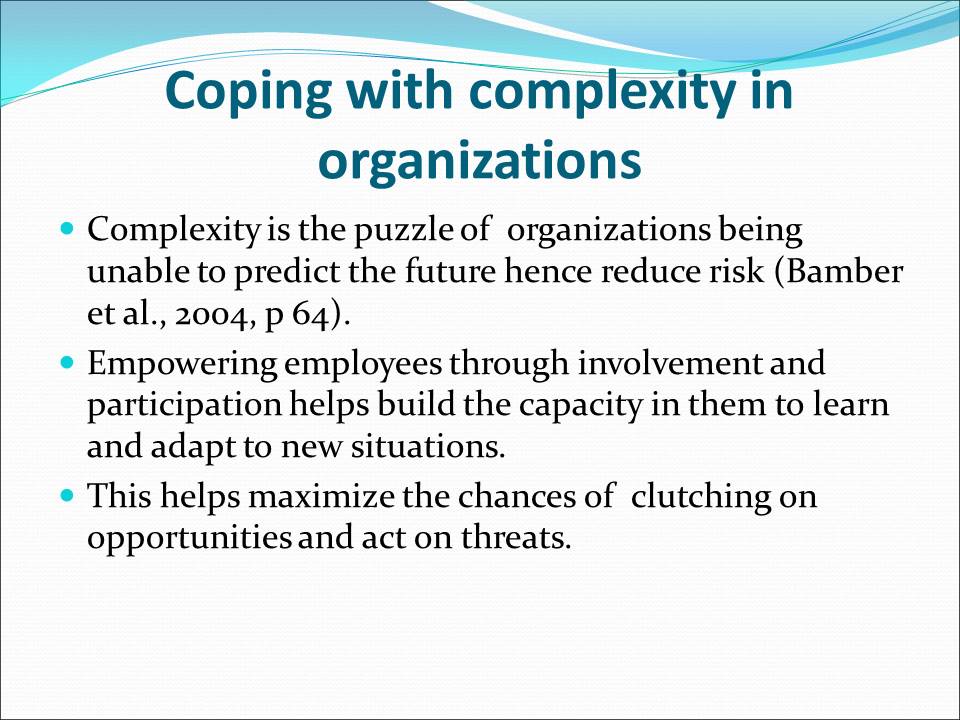
Dealing with Ambiguity and Uncertainty
- Ambiguous or uncertain business situations have different expectations.
- It is important to overcome this problem as it could lead to losses.
- Involving employees in decision making processes helps the managers to come up with tools to overcome uncertainty and ambiguity (Bratton &Gold, 2007).
Making the right decision regarding the future is normally a hurdle task for most managers. It happens that most of the decisions made on uncertainties are not easily reversible and if reversed, they cost the organization huge sums of money thus incurring losses. However, the incorporation of employees’ ideas in the decision making process could help solve the problem because we could have employees who had faced similar challenges in other organizations hence providing the right course of action (Bratton &Gold, 2007) .
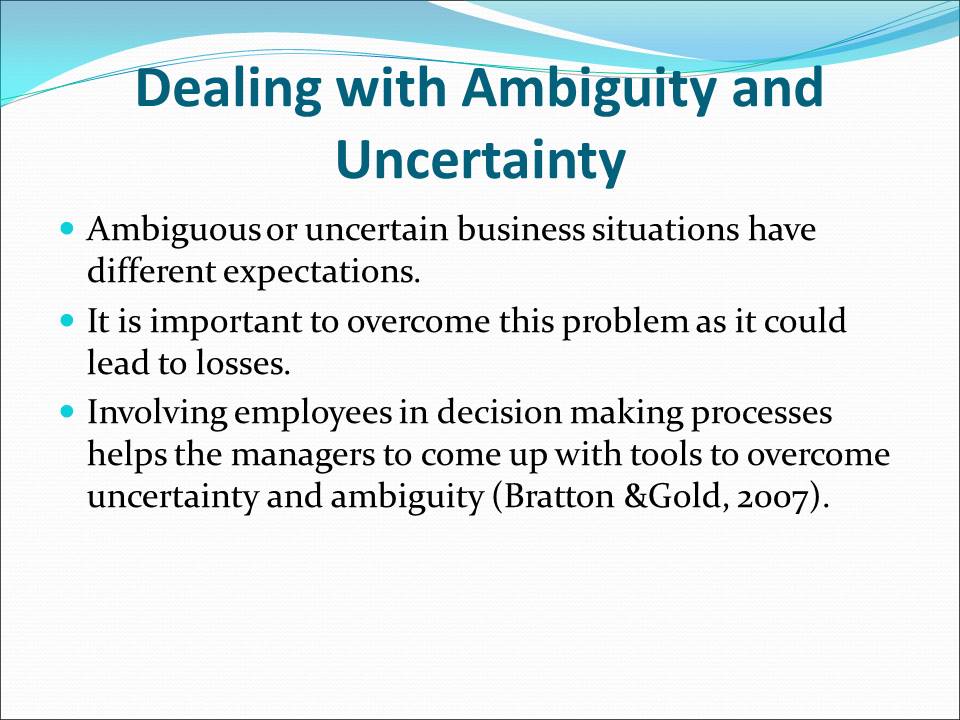
Team work
This photo is a demonstration of teamwork which is very important when it comes to coping with complexity, uncertainty, and ambiguity in organizations.
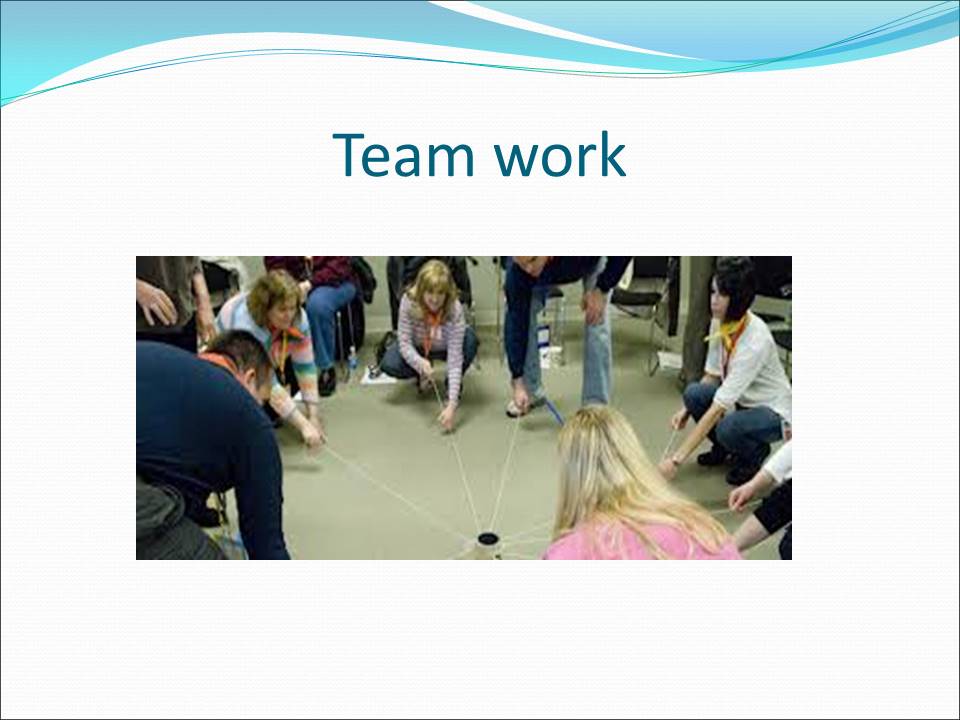
Statistics
- Determining the financial success of an organization is one way of measuring the benefits of employee empowerment (Foot & Hook, 2008).
- This research has been done in most of the companies in the world and the results have been positive.
- A case in study is Motorola Inc. whereby, it estimated $30 return on every $1 spent on employees.
In order for the management of an organization to know if empowering their employees has been of any benefit to them, financial records are used and compared (Foot & Hook, 2008). In most of the companies that have conducted and analyzed this data, it has been found out that employee empowerment has a positive impact on the financial status of organizations.
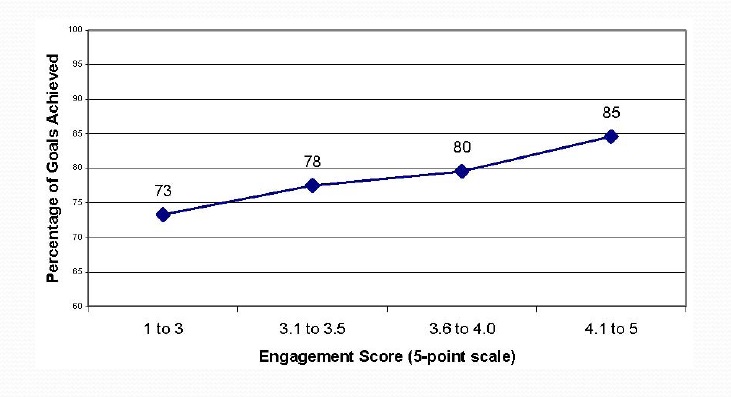
This graph shows that as you empower and engage the employees in the organizational management, organizational goals achieved increase (Foot & Hook, 2008).
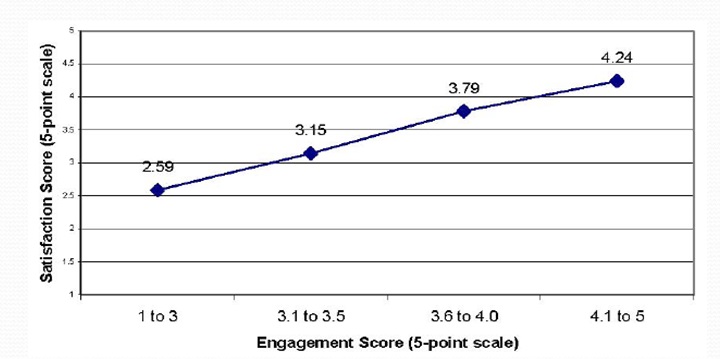
This graph indicates that employee empowerment increases their satisfaction rate hence making them work diligently and wholeheartedly (Foot & Hook, 2008).
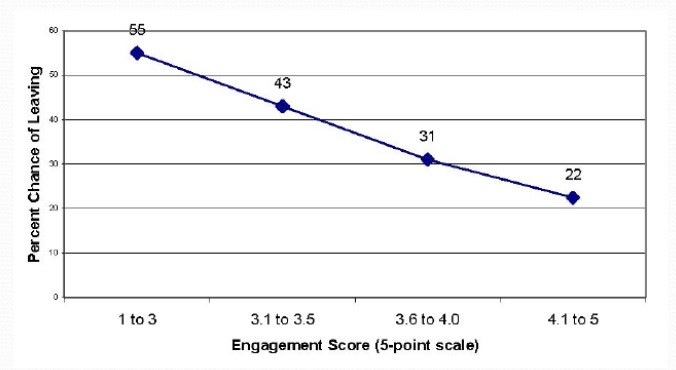
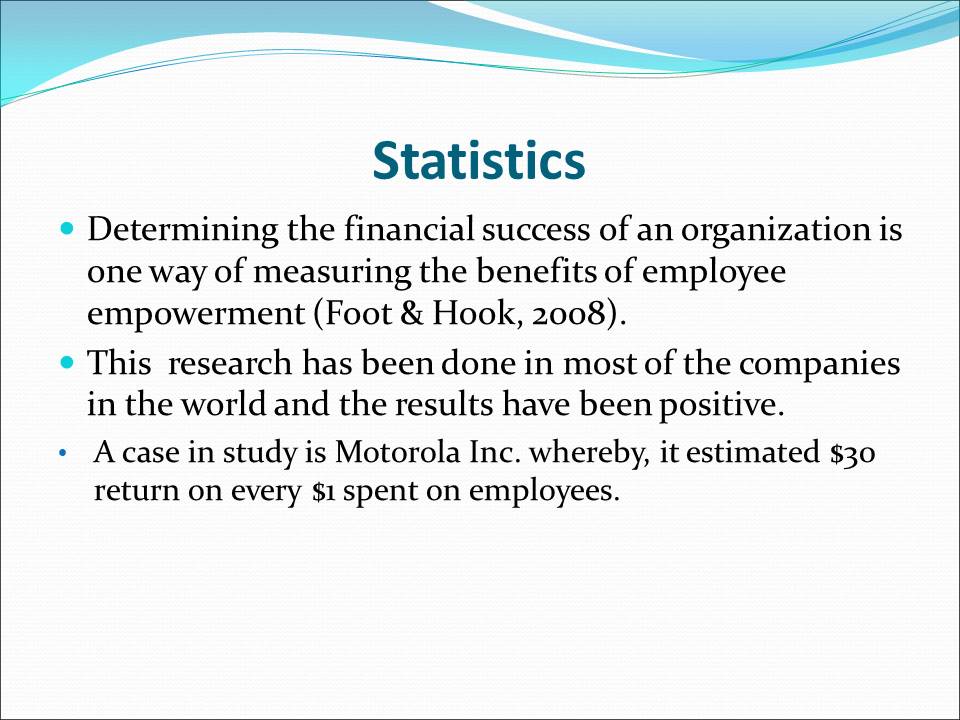
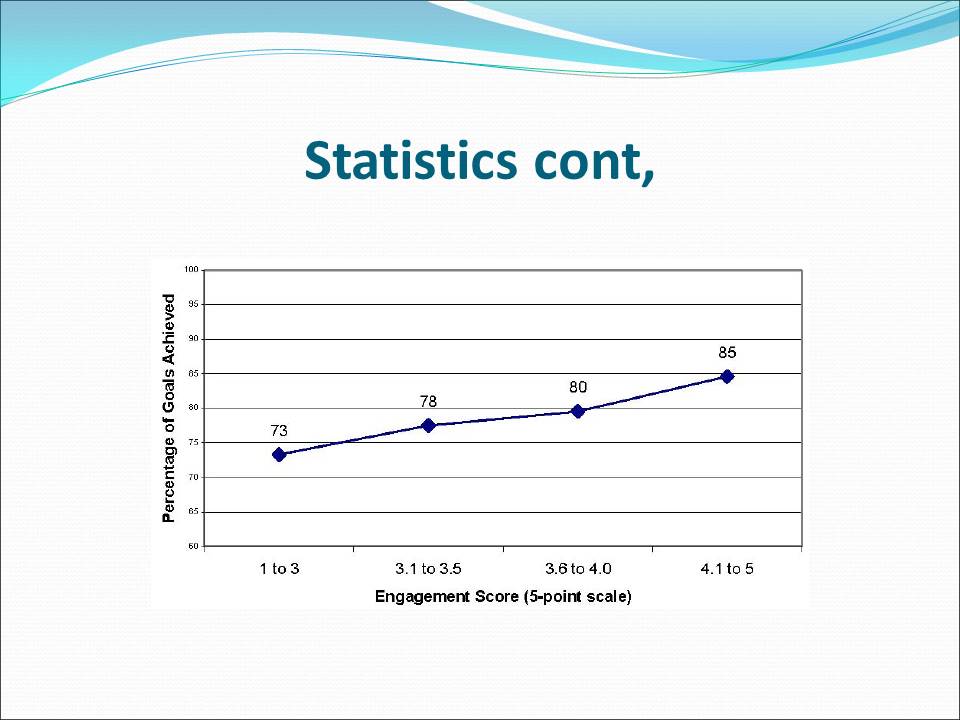
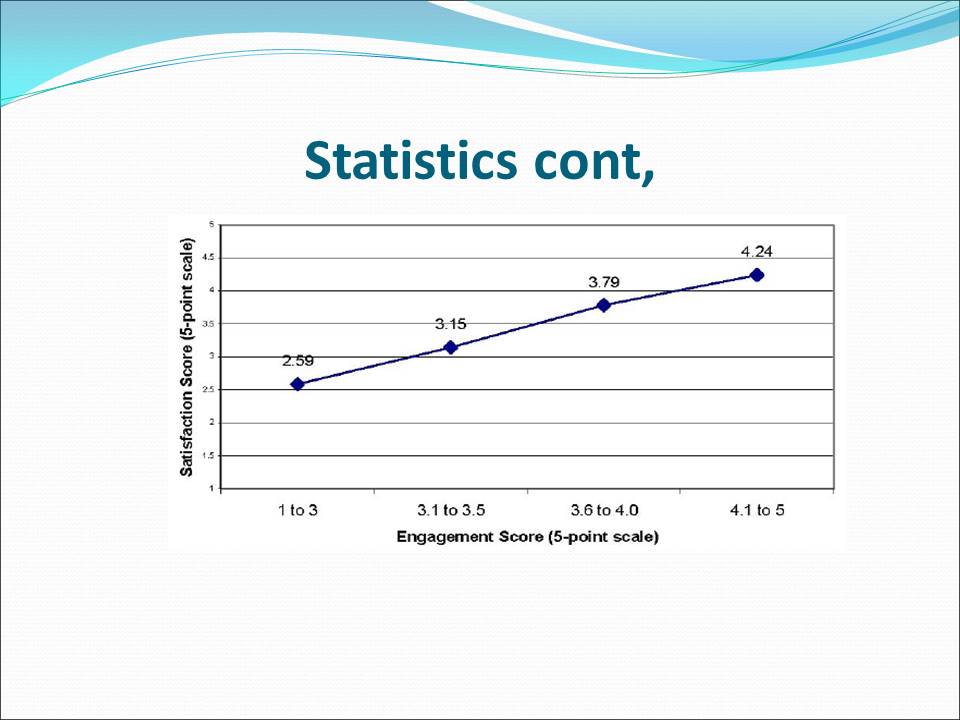
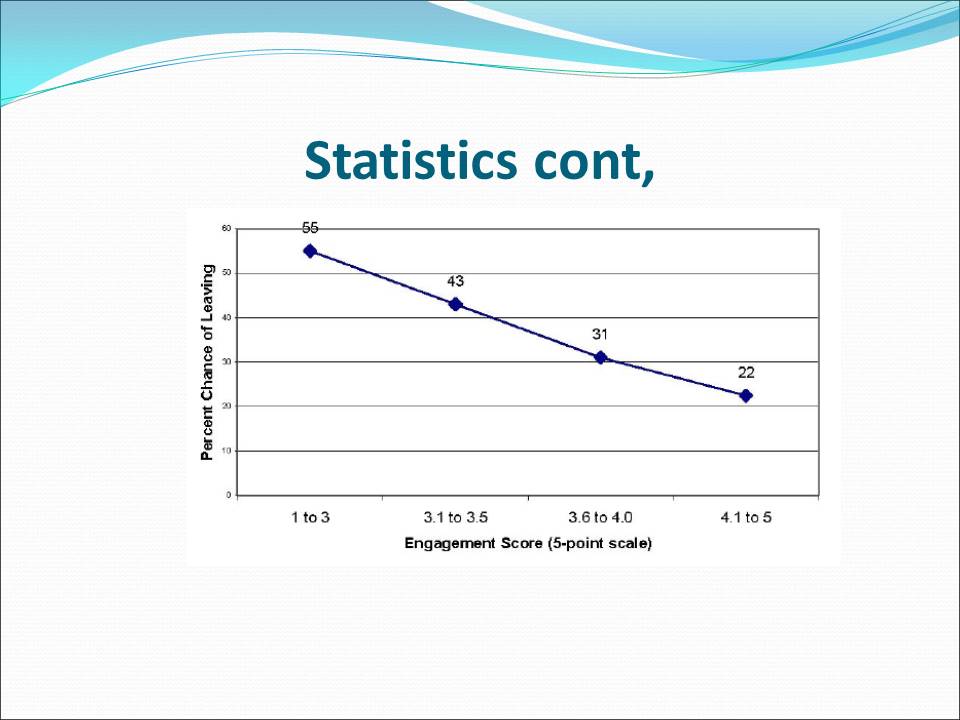
Challenges of employee empowerment
- Employee empowerment also has some shortcomings.
- They include;
- Failure: Employees may undertake decisions that could pose the risk of failure (Anderson, 2013, p.1).
- Segmentation in the workplace: Employees working in groups could become adamant to work in other sections/departments in the organization because of the teams they are used to.
Despite the fact that employee empowerment helps solve the problems of uncertainty, ambiguity and complexity, it also has some shortcomings (Weiss, 2002). For instance, since the employees are left to make their own decisions without consulting, they could make decisions that threaten the existence and future of the organization (Anderson, 2013, p.1). Secondly, once employees have gotten used to working in specific groups or teams it makes it difficult for them to move to other teams hence creating segmentation in the workplace.
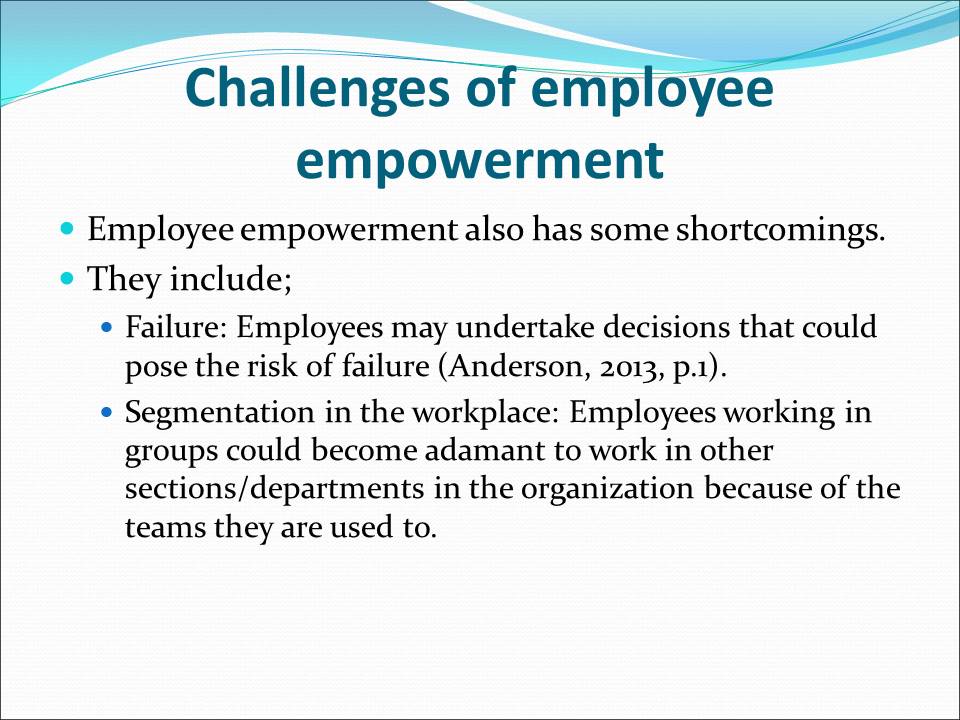
Conclusion
- It is evident that employee empowerment is a motivational factor for employees.
- Once empowered, employees are of benefit to the organization in terms of efficiency, quality decisions and solving the problems of complexity, uncertainty and ambiguity among others (Hyman & Mason, 1995).
- However, empowerment comes with negative impacts such as failure and segmentation.
Employee empowerment through participation and involvement seems to benefit the organization more than it does on the employee. This is because the organization enjoys quality and efficient output among other benefits such as solving the problems of complexity, uncertainty and ambiguity. It is also important to note that empowerment of employees comes with the cost of risking failure and segmentation in the workplace.
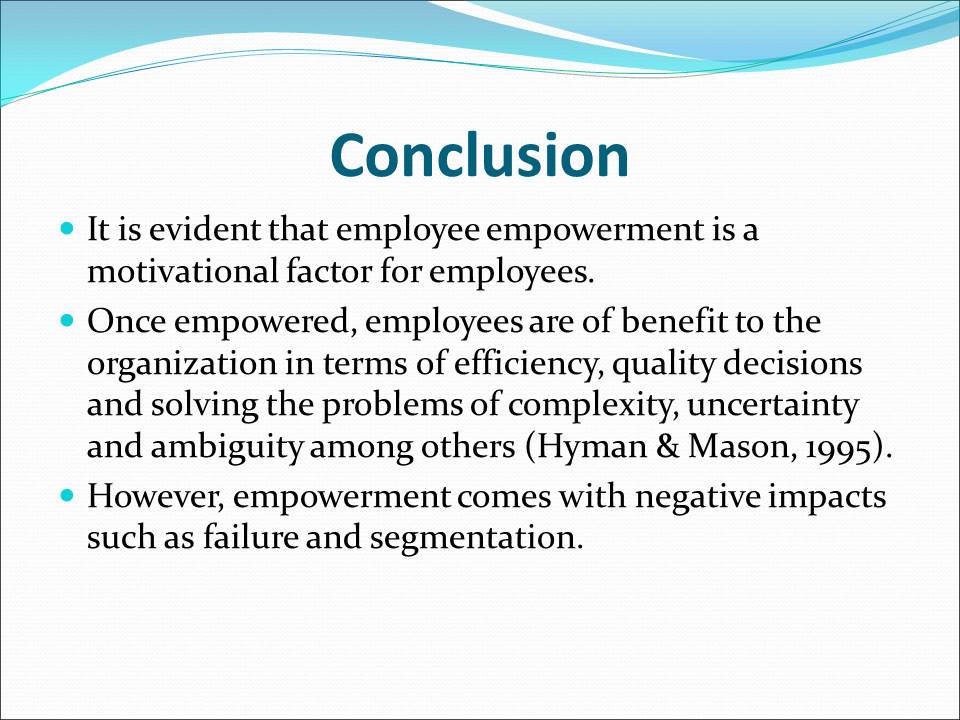
Reference List
Anderson, A 2013, Consequences of Employee Empowerment, Web.
Armstrong M 2010 ,Handbook of Reward Management and Practice: Improving Performance Through Reward, Kogan-Page, London.
Bamber, GJ, Lansbury, RD & Wailes, N (eds.) 2004, International and comparative employment relations: Globalization and the developed market economies, Allen & Unwin, Crows Nest.
Beardwell ,J & Claydon ,T 2007, Human Resource Management: A Contemporary Approach , Financial Times Prentice Hall, Harlow.
Blyton, P & Turnbull, P 2004, The Dynamics of Employee Relations (3rd Ed), Palgrave Macmillan, Basingstoke.
Bratton, J &Gold , J 2007, Human Resource Management, Palgrave Macmillan, Basingstoke.
Daniels, K 2006, Employee Relations in an Organizational Context, McGraw Hill, London.
Dundon, T & Rollinson, D 2011, Understanding Employment Relations, McGraw Hill, Maidenhead.
Foot, M & Hook, C 2008, Introducing Human Resource Management, Financial Times Prentice Hall, Harlow.
Hyman, J & Mason, B 1995, Managing employee involvement and participation, Sage, London.
Lashley, C 1997, Empowering Service Excellence: beyond the quick fix, Cassell, London.
Lashley, C 2000, ‘Empowerment through involvement: a case study of TGI Fridays Restaurant’, Personnel Review, vol. 29 no. 6, pp. 791-815.
Paige, A 2013, Employee Empowerment Techniques, Web.
Potterfield, T 1999, The business of employee empowerment: democracy and ideology in the workplace, Quorum Books, Westport.
Torrington, D, Hall, L, & Taylor, S 2008, Human Resource Management, Financial Times Prentice Hall, Harlow.
Weiss, J 2002, Industrialization and Globalization: Theory and evidence from developing Countries, Routledge, London.
Wilkinson, A 1998, ‘Empowerment: theory and practice’, Personnel Review, vol. 27 no. 1, pp. 40-56.